Growing spirea on the site: where to start? Planting and care rules
When the beauty of a plant is combined with unpretentiousness, it becomes a welcome guest on any site. The variety of species and varieties of spirea only increase its advantages when choosing garden plants. A minimum of effort is required to plant and care for the spirea. Perennial is famous for its undemandingness, frost resistance and stunning beauty of flowering.
Plant features
Spirea is a perennial from the Rosaceae family. The plant is common in many parts of the world, it develops equally well both in mountainous areas and in the steppes and forests. Gardeners respect spirea for its resistance to adverse conditions. Frost-resistant shrub varieties are especially popular.
The main feature of a perennial is its lush flowering. Spirea flowers themselves are small, no more than 2 cm, but they gather in large spike-shaped, paniculate, corymbose or pyramidal inflorescences that will decorate any summer cottage. The shade of spirea flowers is from white to pink and deep red. Budding begins in spring or summer and can last until the onset of cold weather.
Shoots of spirea species are straight, creeping or spreading. Leaves are deep green, lanceolate or oval. The height of the bush, depending on the variety, varies from 20 cm to 2 m. There are dwarf varieties that do not exceed 14 cm in height. The shrub is characterized by active growth. The average life of a plant is 20 years.
Shrub cultivation is available even to gardening neophytes for the following reasons:
- the plant is undemanding to lighting, it grows equally well both in the sun and in the shade;
- not susceptible to attacks of pests, resistant to diseases;
- withstands heat, withstands cold winters;
- tolerates well pruning.
Popular types
There are more than a hundred varieties of shrubs, each gardener will select the right variety for his site. Spireas differ not only in the height of the bush, but also in the shape of the branches, leaves, and the shade of the inflorescences. There are spireas blooming in spring, they are distinguished by a white shade of flowers. A separate group is formed by summer flowering shrubs, mainly with bright inflorescences. Hybrids with variegated and yellow leaves are distinguished.
Popular varieties of spirea for the site:
- Spirea Wangutta - a tall specimen, can grow up to 2 m and more. Cascading bush with white corymbose inflorescences. Grows rapidly and densely, blooms very luxuriantly. A frequent inhabitant of the sites, for its beauty was named the White Bride and Snow White.
- Spirea Douglas - a species up to 1.5 m high and up to 2 m wide. Interesting is the paniculate inflorescences of pink flowers. It develops rapidly, budding begins in summer.
- Spirea Billard - hybrid of willow spirea and Douglas. Feature of the species: tall, bright pink inflorescences, panicles.
- Nippon - spherical shrub up to 1.5 m tall. The most popular variety is the Nippon Snowmound Spirea. Its characteristic features: large diameter, curved branches, lush white inflorescences.
- Willow - another tall representative. A bush with erect branches reaches 2 m. Panicle inflorescences are formed from white or pink flowers.
- Macrophylla - a kind of Japanese spirea. The owner of long leaves that change color depending on the season: in spring - purple, in summer - green, in autumn - yellowish. Summer flowering variety.
- Spirea Crispus - also a representative of the Japanese species. This is a dwarf shrub, not exceeding 0.6 m. The inflorescences are formed from lilac flowers.The decorative value lies in the leaves that change color from reddish to yellow throughout the year.
- Arguta (sharp-serrated) - a sprawling tall shrub characterized by early flowering. By the end of May, you can see white inflorescences on slightly drooping branches, which makes it look like a waterfall. In addition, Argut's spirea has a pleasant aroma.
- Spirea Thunberg Is a mountain variety native to Korea, Japan and China. Inflorescences are umbellate white flowers that bloom in May. The species bears fruit from the age of three.
A special place is occupied by frost-resistant spireas. For cultivation in the Urals and Siberia, species adapted to adverse conditions are suitable. These include: gray spirea, arguta, Vangutta, Thunberg.
Reproduction of spirea: all ways
If one spirea bush on the site is not enough, it is easy to get a whole hedge out of it with your own hands. The best time to breed is spring or autumn. Optimal weather conditions: it should be warm, but cloudy.
Both vegetative and seed methods are used. The latter is not used for hybrid varieties, since all varietal characteristics of the parent plant are lost. The advantage of the seed method is a large number of seedlings in one procedure. Seed pods are cut unripe, in the middle (for early flowering) or late summer.
Shoots with fruits are placed in an open box and kept for 14 days. Then the spilled seeds are collected and planted in the spring or late autumn. For this, the material is placed directly into the "adult" soil and kept moist until germination. After about 2 months, when the sprouts stretch 1.5-2 cm, a pick is made. Spring plantings in the fall can be moved to the main garden bed, autumn - next spring.
Vegetative breeding methods for spirea:
- Cuttings. The method allows preserving all varietal characteristics of the species. Collection and planting takes place in the fall. Lignified branches of the first year are selected, growing straight up. At least 5 leaves are left on each cutting, the upper ones are cut in half, the lower ones are removed. Before planting, each cutting is kept in a growth stimulator solution for at least 10 hours, then each cut is sprinkled with Kornevin powder. Planting is done in wet sand, cuttings are placed at a slight angle. Until winter, the seedlings are kept in the shade and in constant moisture. For the winter, containers with plantings are buried in the ground and sheltered. By the spring, young spireas are transplanted to the garden bed, and in the fall they are moved to a permanent place.
- By dividing the bush. The method is used at any time of the year, except for winter, but it is best to divide the spirea in the fall, when the bush does not require special care. Plantings are used 3-4 years old, since more mature plants have a powerful root system, and it is more difficult to dig them out. The bush removed from the soil is immediately placed in a basin of water for an hour, then taken apart. Each of the divisions should have at least 4-5 strong roots and a strong root lobe. Landing is carried out according to the standard scheme.
- Layers. The method is used when you need to get a small amount of seedlings. In the spring, with the appearance of buds, some shoots are pressed to the ground, for example, with hairpins, and covered with soil. To speed up rooting, the first buds of the mother plant are removed. It is also necessary to maintain constant soil moisture. For the winter, plants are sheltered from frost. The next spring, the layers are separated from the original bush and transplanted to a permanent place.
How to plant
Planting in open ground is carried out either in early spring, or in autumn before leaf fall. Spring planting is preferred for summer-flowering varieties. A well-lit area is selected. Although the plant can withstand partial shade, a large amount of sun will only have a positive effect on its development, and a deficiency will lead to smaller flowers.
Spireas should be planted in loose soil with a slightly acidic reaction. To fill the pit, a mixture of sand, peat and garden soil is prepared in a 1: 1: 2 ratio. The prepared soil is watered abundantly and left for several days.
Planting stages:
- The hole is dug twice as large as the root system of the seedling, its parameters are approximately 50 × 50 cm. Before planting, the hole must be ventilated and dry. At its bottom, a drainage layer of 15 cm is laid from broken brick, crushed stone or coarse sand.
- If several spirits are planted to create a hedge, a distance of at least 50 cm is maintained between the holes. It is allowed to dig a trench. It is also necessary to maintain the distance when planting next to other plants, since the root system of spirits grows significantly over time.
- The open root system must be inspected before planting. All damaged roots must be removed with a secateurs.
- The crown of the seedling needs preliminary pruning. Shoots are shortened by about a third with a pruner. If the root system is too dry, more shoots need to be removed.
- If the seedling has a closed root system, it is watered abundantly and only then transferred to the prepared hole.
- The seedling is placed in a hole, leaving the root collar at soil level. The roots need to be spread.
- The plant is sprinkled with prepared soil mixture, trampled a little and watered. The trunk circle is covered with a layer of peat mulch.
Advice
If the planting is done in the fall, the young plant must be covered during the cold weather.
How to care for spirea outdoors
Spirea care is not difficult. The main requirement is moderate moisture. The roots are close to the surface and can dry out. Water the plant more often, especially in hot weather. One bush is enough for 15 liters of water twice a week. A layer of mulch will protect the roots from moisture loss.
Loosening of the soil is carried out carefully because of the close-lying root system. All weeds must be removed. You don't have to remove the mulch, just update the layer a little every time.
The first years of life spirea builds up the green mass, budding occurs only in the third year. When caring for a spirea, fertilizers should be periodically applied so that the flowering is long and abundant. After the autumn pruning, you need to add a mineral complex for flowering plants. In summer, the shrub is fertilized with organic matter, for example, mullein solution. It is allowed to add a little superphosphate to it - about a matchbox on a bucket of liquid.
Pruning is a mandatory procedure in caring for flowering shrubs, as it grows quickly and sometimes unevenly. The manipulation is carried out in the spring. In early flowering varieties, only the tops of the shoots should be removed at the end of flowering. In other species, the branches are cut by a third, while the large bud is left in place. It is better to remove weak sprouts completely. The larger the pruning, the more the bush grows.
Advice
Weak and diseased branches are removed at any time of the year.
The cultivation of spirea attracts not only beginners, but also gardening masters. It's nice to get a lush flowering bush with little effort. Spirea goes well with other plantings on the site, serve as an excellent frame for paths and reservoirs. Spirea is not only a decorative participant in the landscape, but also strengthens the soil and is even used for medicinal purposes.

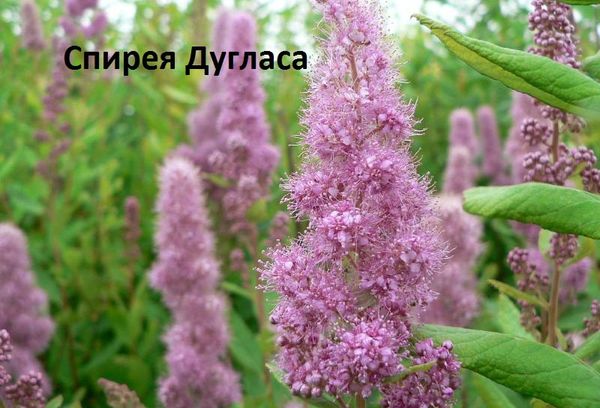
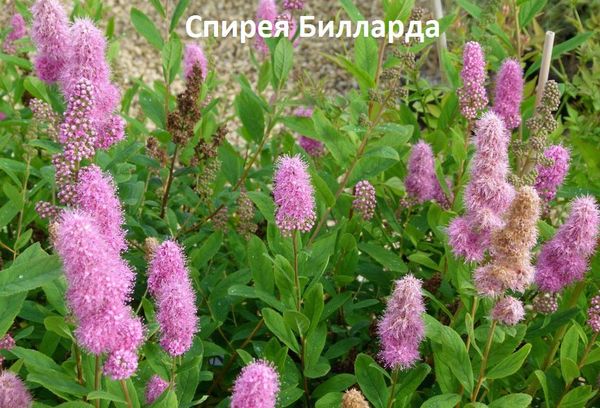
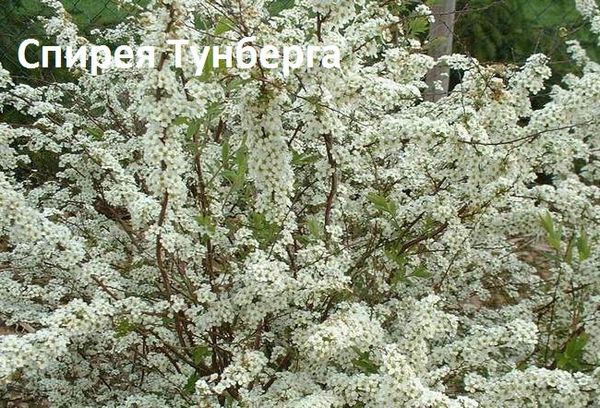

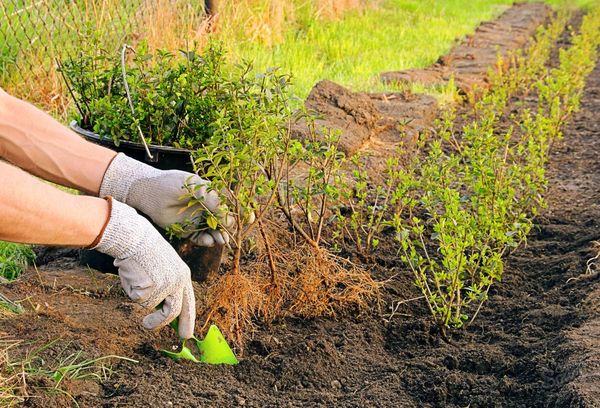

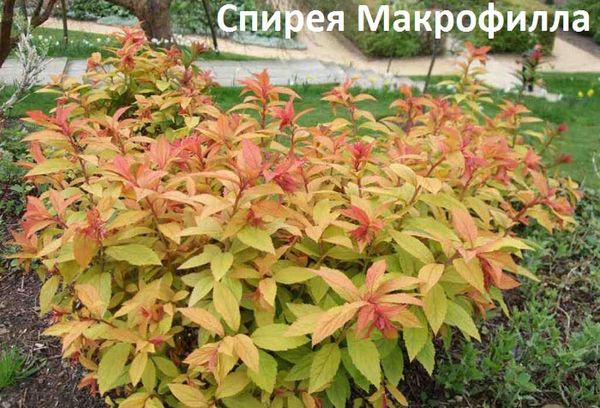
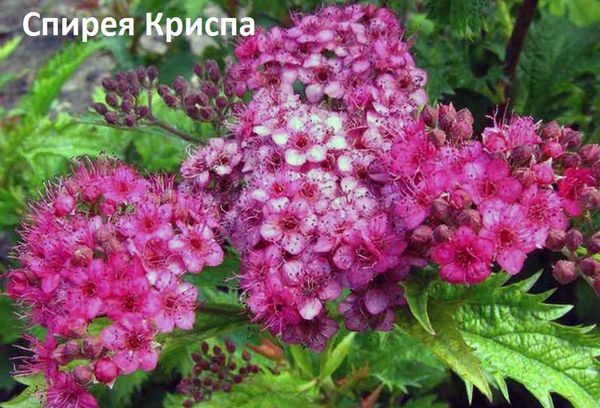
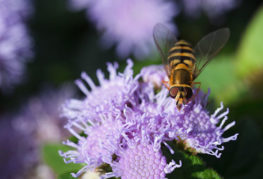

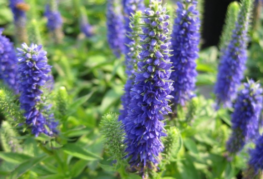
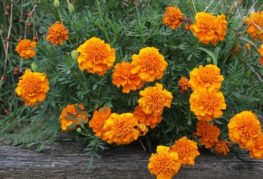
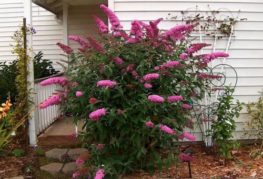

and will be published shortly.